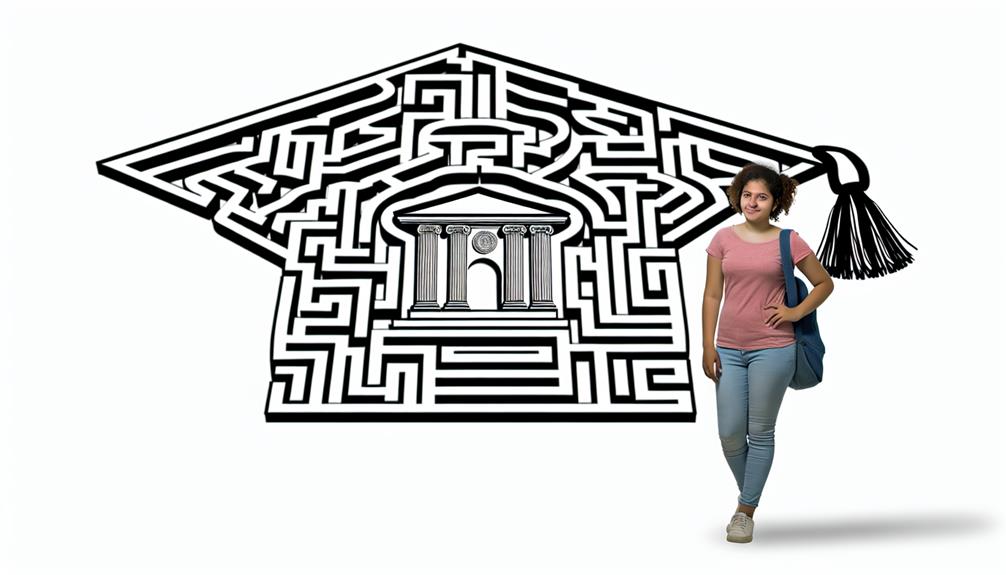Challenges mar the quest for education. A major challenge is financing your education. Even though the government has made strides in providing access to education at subsidized rates, the cost of education is still unaffordable for the vast majority of individuals.
Financial institutions, in conjunction with the federal government, alleviate the burden by providing student loans. Almost every household in America has a beneficiary of student loans.
However, there are as many defaulters. Before choosing whether to opt-in for a student loan, there are essential things you need to know.
We guide you through financial literacy to enable you to select the best student loans and how to repay them after your academic success.
What Are Student Loan Interest Rates?
Student loans entail government or private financial assistance towards offsetting some of the academic fees in your institution. Student loans also provide upkeep money for both off and on-campus students.
Private and federal financial institutions disburse student loans into your account and school account. Student loan interest rates are a percentage of the principal amount that you will repay besides the principal.
Student loans aim at providing affordable education so that students can concentrate on their education and build good college credits rather than working somewhere to afford their fees.
The various financial institutions in the country offer varied rates depending on multiple factors, such as financial capability, course, and academic grades.
Each financial institution provides its rates, albeit regulation by the student education department through higher education loan authorities of different states.
Federal vs. Private Student Loans, Which One Should You Choose?
Federal student loans are provided by the government, while banks, credit institutions, SACCOs, and other financial institutions offer private student loans.
Generally, personal loans have higher interest than federal student loans. Federal loans are categorized into three:
- Subsidized
- Unsubsidized
- Direct plus loans
The three types of loans have different requirements and regulations. Federal student loans have fixed interest rates and offer a grace period for subsidized loans.
The significant merit of student loans is that the repayment period only starts after graduating or getting employment within a specified time frame.
In addition, the payable rates are tax-deductible. However, the drawbacks of federal student loans include a limit on borrowing, harsh debt collection measures, and origination fees.
As a result, student debt is epidemic, and the government has slashed down federal student loan rates to a 0% interest rate for payments up to September 30, 2021.
Private student loans offer more lending and repayment options. Interest rates for private student loans vary contingent on the financial institution. We recommended DYOR and due diligence to keep up with your private institution rates.
Private institutions have higher rates than federal loans. Moreover, private loan beneficiaries do not enjoy forgiveness periods that have recently put student loan rates at historic lows.
Since private student loans offer more remittance, consider these if you have maxed out on your federal student loans and require additional funding. For personal loans, you need a co-signer and an impeccable credit record.
Difference Between Variable and Fixed Rates
One must consider a trade-off to agree to unexpected interest changes that may oscillate on both ends of the loan and a fixed rate on the principal.
Simply put, fixed rates remain the same throughout the repayment period, while variable rates are subject to change depending on the market rates.
When choosing between variable and fixed student loan rates, you need to consider the time you intend to repay. Fixed rates are suitable for more extended repayment periods.
However, if you are sure you will repay your loan in a short while and know how to lower student loan payments and reduce overall costs then variable rates are the best since they do not attract a high initial amount of interest rates.
The fixed rates you get on your federal loan depend on the government regulations and the year of study. Variable rates rely on the benchmark rate. The wise decision is to opt for fixed student loan rates if you prefer predictability.
How Do Student Loan Interest Rates Work?
Many students are concerned about what amount they need to pay at the end of their studies.
Unfortunately, incorrect information leads to many students defaulting on loans, which adversely affects their credibility. Understanding how interest rates work enables you to choose the suitable refinancing method.
Every student signs a promissory note that has terms and conditions. It is essential to scrutinize the disbursement date, the principal, interest rate, and how it’s accrued.
Also, importantly, check for capitalization (if they add the interest to your principal). Private financial and federal institutions assign an interest rate factor multiplied by your loan balance and the period since the last payment.
The result is the interest you will pay for that specific period. An interest rate calculator can aid you if you are not into basic arithmetic.
Federal student loans have student loan amortization, which lowers the interest you pay sequentially. In addition, private institutions may offer tiered rates for a particular type of student loan.
Therefore, it is essential to read through the loan application form before agreeing to the set terms.
How to Pay Less Student Loan Interest Rates
Typically, the first payment is used to pay off the interest accrued on the principal. A fixed-rate student loan has close margins if you opt to pay either the interest or the principal.
However, variable rates attract higher payments if you do not offset the principal amount. The noble step is to pay the principal first.
The lower the principal, the lower the interest you will pay. Who knows? The government might slash off rates again during your repayment period.
Financing Your Student Loan
The two standard options for paying student debt are consolidating and refinancing. Consolidating is combining multiple federal loans into one loan for streamlined payment. Refinancing replaces the existing federal loans with a new private student loan, ideally at a lower interest rate.
To check for eligibility for federal consolidation, visit the Federal student aid website. Private consolidation requires the lender’s approval. Refinancing your student loans saves you money, while consolidation provides the average of weighted rates to the total principal.








